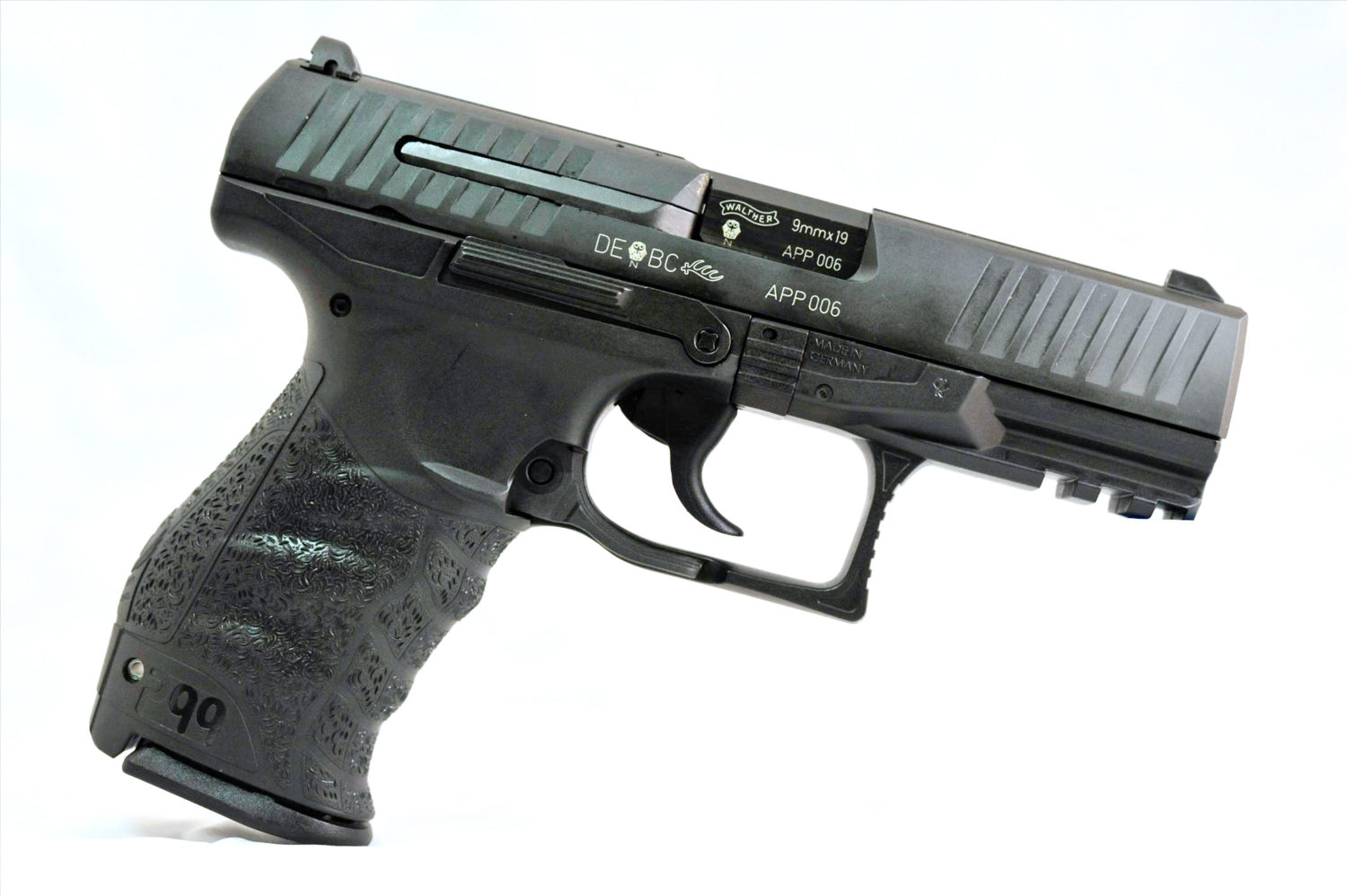We are often asked what firearm a person should get for concealed carry. It’s easy to answer Glock 19 or Sig P365 or any other popular and prevalent firearm currently on the market, and sadly, many people answer with a specific make/model without taking the time to define what requirements the inquirer may have. In this article, we’re not going to answer this question, but we will help identify what some common requirements are for a CPL-intent firearm so that you can answer it for yourself.
Before we get too much into this, though, let’s take a moment to understand that the firearm is one part of a system that includes the firearm, carry location, holster used, and clothing. Some of these concepts are discussed in our previous article, The box full of holsters, the box full of lessons.
Each of these subsections should be thought of as a filter, allowing the shopper to remove items from the list of firearms they are considering.
Concealability
Whaaaaaaaa? Reliability isn’t first? No, not at first, it isn’t. Why? Because the AK-47 is not a concealable firearm. “But but but… we’re talking about pistols!”, I hear you cry. Correct, which is why concealability comes first. It’s a concealed pistol license. Duh?
In Michigan, there’s no real penalty for printing (the pistol is exposed through clothing, or otherwise identifiable) but in some states, printing is a serious issue. Either way, the professionally minded concealed carrier will choose to conceal or open carry, and it shall be that way. ‘Casual’ concealed carry, where some printing is acceptable, is for amateurs.
Concealability will vary for everyone, and it will depend on the firearm-location-holster-clothing system the carrier has in place. Women especially understand this system as they are faced with more form-fitting clothing that makes concealability harder. For them, even mid-size firearms like a Glock 19 will not be concealable.
Climate
Also, consider the climate. Here in Michigan it is shorts and t-shirt weather for 4 months. Carrying a mid frame pistol may be a challenge. “Sun’s out guns out” isn’t a phrase about open carry! The firearm you choose should still be concealable. For the remaining 8 months of the year, it may be relatively easy to do. It’s not uncommon to have 2 or even 3 pistols that can be considered for concealability as wardrobe changes.
Discretion
Let’s just face it. Some places are filled with obliviots that wouldn’t notice the negligent discharge of a flare gun. Strip malls and Starbucks are filled with these types. Even then, if for some reason your concealed pistol were spotted, the worst that would happen is you’d be asked to leave without your triple machiato by the timid barista.
Some places, though, might carry some real consequence. Your workplace may not have rules against concealed carry, but it might not be the best thing to be spotted with it. You may have the permission of your pastor to carry at church, but some families spotting the gun may not be so comfortable.
For these places, smaller generally means more concealable. If your travels include a ‘high discretion’ location, this is worth noting in your selection process.
Reliability
Yes, now we will talk about reliability, now that we’re actually talking about concealed carry pistols. Simply put:
- It must go bang when the trigger is actuated.
- It must not fail to go bang when the trigger is actuated.
- It must not go bang when the trigger is not actuated.
Pretty simple, right? So far, it is. But let’s talk about something called functional reliability. Everyone likes to talk about how revolvers are the most reliable handgun. In truth, they are not. The myth of revolver reliability is most borne out of two points:
1) In the early days of semiautomatics, ammunition used poor quality primers (they were good in their day) that caused frequent failures to fire (misfires). This, coupled with the cartridge manufacturing skills of the day, caused variability in ammunition quality. This brings about point 2…
2) In a semiautomatic handgun, failure to fire requires a slide manipulation to cycle past the malfunctioning cartridge and bring another cartridge into the system. This is a more time consuming process than simply squeezing the trigger again like on a revolver.
In practice, a reputable-manufacture revolver is less mechanically reliable than a reputable-manufacturer semi-automatic. However, once the user is added to the system, a revolver is more functionally reliable than a semiautomatic. Simply put, the semiautomatic requires a stable hold so that the slide can move relative to the frame, to cycle the action. “Limp wristing” can cause this relative movement to be impeded. A revolver does not have this drawback.
As always, the shooter is a factor in the system. Those with weak grips, must shoot one handed, or other limitations that may exacerbate malfunction need to consider this in their reliability assessment of the shooter-firearm system.
Manufacturer reputation is also a part of reliability. Do they have the know-how to make a reliable firearm? Do they have the infrastructure to correct (recall) any issues? Will they stand by their product? One only needs look at the Remington R51 fiasco to understand it’s not just about name, it’s about real reliability.
Stopping Power and Manageability
Stopping power is the difficult to define concept of the cartridge’s ability to deliver the force to neutralize a threat. In truth all handgun cartridges are poor stoppers, and it must be recognized we are trading convenience/concealability for effectiveness. It’s just the way it is.
To make matters easier, the following cartridges are common CPL-intent.
Semiautomatic:
- .380 ACP
- 9x19mm
- .40 S&W
- .45ACP
Revolver:
- .38 Special
- .357 Magnum
Yes, there are others. Yes, we know you have your favorite. Yes, it may not be on this list. But let’s be honest, if your .43 cal Acme FullSemi Obscurus is the very best there is and you swear by this mythological wildcat cartridge, why are you reading an intro to CPL article? Hmm?
For the rest of us, the above cartridges represent commonly available, readily purchasable, and affordably trainable cartridges that have a wide array of CPL-intent pistol models available.
Now let’s talk about manageability. We group stopping power and manageability together because it’s not just about the cartridge, it’s about the firearm-shooter system. the .357 Mag and the .40 S&W tend to be a bit ‘abrupt’ in their recoil. Smaller frame pistols may also have this effect and feel when shooting less powerful carteridges.
The FBI explored the powerful 10 mm auto cartridge in the late 1980’s after a shootout in Miami left two agents dead and five more injured. It was concluded that the 10 mm auto had improved power, but its manageability was unsuitable for most agents. We have the same concerns, and most of us have fewer training opportunities than an FBI agent.
We must find the firearm-cartridge combination that gives us the most stopping power that we can safely and effectively wield. And that means trying out multiple handguns in multiple calibers. To the gun store! But wait…
Manageability Part 2
A big part of manageability is the firearm’s ergonomics. Is it the right size for us? Is the grip wide/narrow enough to effectively shoot? Can we get enough grip contact to create a reliable shooting platform?
Note I did not say “does the gun feel good to hold/shoot”? This is largely the most ridiculous ‘gun guy’ pieces of advice out there. I’ve seen countless Facebook posts from these guys that say “go to the gun store and pick what feels good in your hands”. NO! Worst advice ever.
The measurable is “Can you effectively wield it?”, not “does it feel good in your hand?”. There is a vast difference, and failure to understand this leaves you with possibly violating item #1 (Concealability). You’ll walk out with a full frame Walther P99, H&K VP9 or some target-intent pistol, with no real way to conceal carry it. (Although, an H&K P30 is my carry gun, but I’m 6’2″ and dress as necessary to do so…)
Effectively wield. Key words.
Capacity
Capacity is unfortunately the sacrificial lamb in all of this. It’d be nice if the grips contained some magical space where 3000 rounds could be placed and fed reliability, but that technology seems to have been lost with the demise of the 1980’s soldier of fortune movies where reloads were either optional or just a plot device to go hand-to-hand.
If high capacity is an absolute requirement, item #1 (Concealability) may have to give a bit of leeway, as will your carry location and attire. Balance these needs appropriately.
In conclusion…
I sincerely hope this helps. There are tons of great guns out there, and they are improving in quality every day. It’d be easy to spout off favorite models, or just tell you to get a Glock 19 like everyone else on the planet, but this would be giving you my solution and not yours. Investigate the above topics. Try them out. Ask friends that have them and actually put them on with the holster, etc. Carry them for a day if you’re able (as law permits). Is your solution one gun or two or more? That’s OK too.
Just remember this is a filtering process, and it truly helps to be unforgiving honest in in your approach. I know you love that gold plated Desert Eagle 50AE because it matches your Texas Centennial commemorative belt buckle, but if we take a moment to be objective, it might not be the best carry choice. Not saying don’t own it, just be diligently pragmatic about its suitability for this role.

